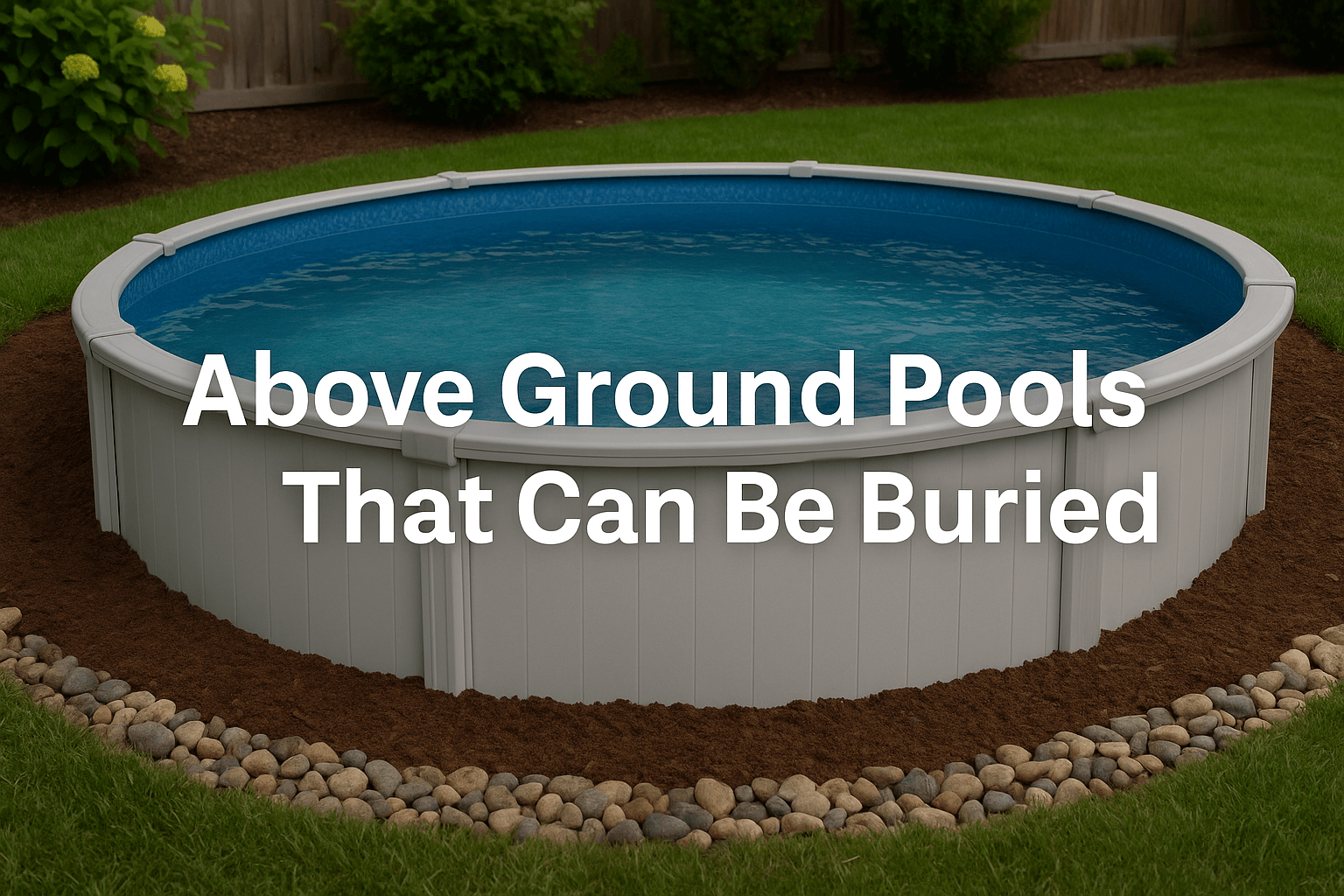
Above Ground Pools That Can Be Buried
Dreaming of a sleek in-ground pool without draining your savings? Good news: yes, some permanent above ground pools can be buried. But before you start digging up the garden, there are a few things you need to know. Not every pool is cut out for life underground. Let’s break it down so you don’t end up with a very expensive pond.
Introducing Semi-Inground Pools
How They Are Different from Standard Pools
Think of semi-inground pools as the middle child in the family. They’re sturdier than a standard above ground pool, but they don’t demand the price tag or commitment of a fully in-ground build. Unlike lightweight pop-up styles, they have reinforced frames, thick liners, and walls that can take the pressure from surrounding soil.
A neighbour of mine buried their flimsy budget pool a few summers ago. Within months, the walls buckled, and the water was gone. It’s a classic example of why choosing the right pool matters.
The Unique Construction and Materials
Semi-inground or permanent above ground pools are built for strength. Steel and resin are the heroes here. These materials don’t just resist rust and corrosion — they also stand firm when buried. Add the right drainage and backfilling, and you’ve got a pool that can sit snugly underground for years.

The Pros and Cons of Going Semi-Inground
Aesthetics and Accessibility
A buried pool instantly changes the look of a garden. Suddenly, you’ve got the sleek lines of an in-ground pool without the huge bill. It’s also easier for little ones to clamber in and out, especially if you blend it with decking or a patio.
Picture hosting a summer barbecue where friends stroll straight from the patio into the pool — no awkward ladders or steps. That’s the kind of finish people love.
Cost and Installation Complexity
Of course, it’s not all sunshine and splashing about. Burying a pool isn’t cheap. In the UK, excavation, drainage, and waterproofing can set you back anywhere from £2,300 to £5,200.
DIY is possible, but here’s the catch: if you get it wrong, it can cost double to fix. A professional team might seem pricey upfront, but they’ll save you headaches (and money) in the long run.
Resale Value and Durability
Done properly, a semi-inground pool can add real value to your home. Buyers see it as a lifestyle feature rather than a maintenance burden. These pools are also built to last — with good waterproofing and drainage, they’ll easily outlive the cheap, seasonal options.

Installation and Maintenance for Buried Pools
The Installation Process
The Importance of Professional Installation
Let’s be honest: digging a giant hole in your garden is not a weekend DIY project for most of us. Professionals bring the kit, the knowledge, and the muscle. They know how to reinforce the walls, compact the soil, and fit drainage so the pool doesn’t collapse under pressure.
It’s a bit like building an extension. Sure, you could try it yourself, but one mistake and the whole thing’s compromised.
Required Land Preparation and Backfilling
First step is preparing the ground. That means clearing the area, checking for utilities, and marking the dig. Once the pool is lowered in, the real trick is the backfilling — compacting soil around the walls so nothing shifts.
Drainage is critical here. A French drain, for example, channels water away before it can build up and cause damage. Skimp on this step and you’ll regret it the next time there’s heavy rain.

Maintenance and Longevity
How Buried Pools Handle Weather
Because they’re partly underground, semi-inground pools actually hold heat better than standard above ground versions. Great for UK summers that don’t always deliver. But with that extra soil contact comes more pressure from the elements.
Heavy rain or frozen ground can be tough on the structure, which is why a good installation and regular checks make all the difference.
Protecting the Pool from Moisture and Soil
Moisture is your biggest enemy underground. Waterproof coatings, strong liners, and reliable drainage are your best defence. Think of it like fitting a raincoat that keeps your pool safe all year round.
A well-protected pool means more summers of family fun, fewer surprise repair bills, and a garden feature you’ll actually be proud of.
Have you checked out our other posts?
What Are Above Ground Pools Called?
Different Types Of Above Ground Pools
Everything You Need To Know About Above Ground Pools



Leave a comment